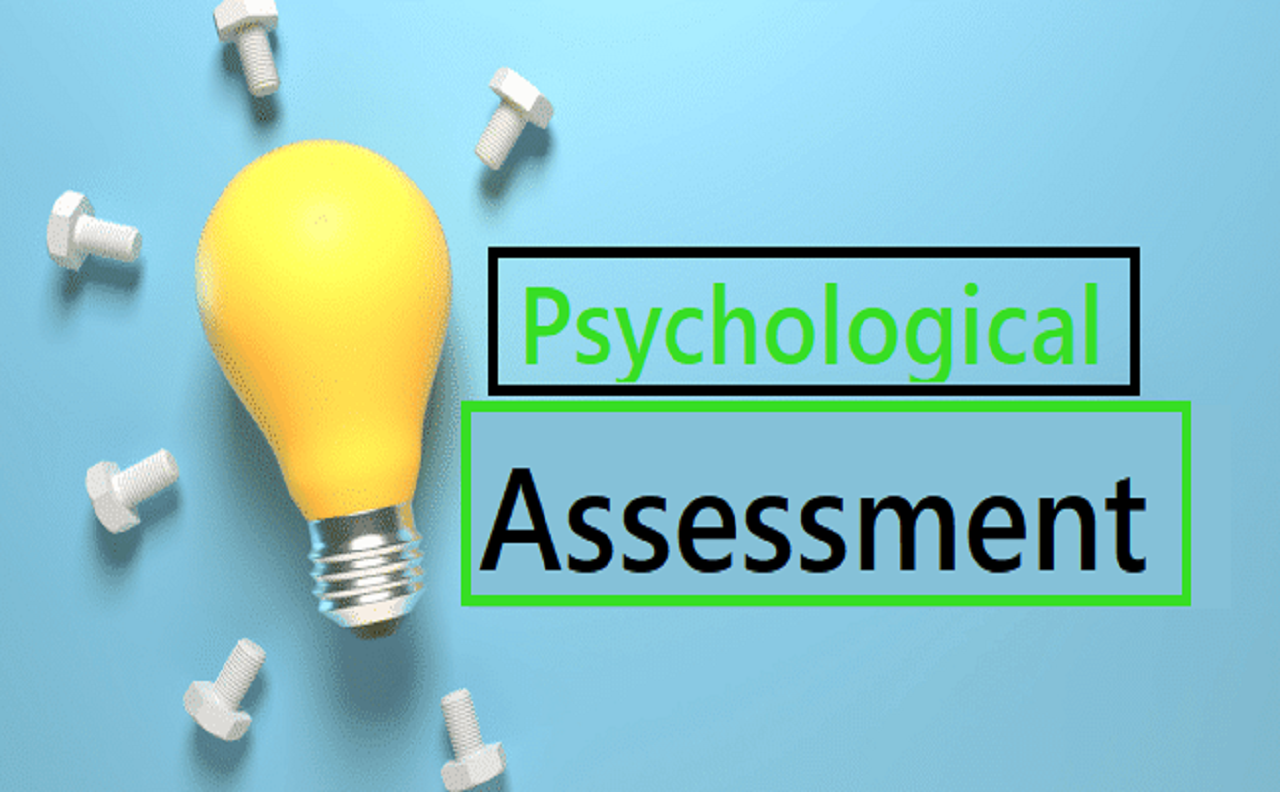
Psychological Assessment
In this section, you will do your personality Assessment. We will Provide different Personality Tests with complete instructions and Manuals along with scoring key. Feel free to use it.
What is Personality Assessment?
The techniques employed to evaluate personality encompass projective methods, behavioral assessments, and self-report questionnaires. To ensure these evaluations are effective, they must be designed with validity, reliability, and consistency in accordance with the established criteria. This knowledge is relevant across various domains, including research, education, career counseling, clinical practice, and vocational guidance.
Behavioral Observations Most individuals form judgments about others based on their observed behaviors. Furthermore, these insights play a significant role in the clinical evaluations carried out by clinicians, psychologists, and other professionals.
Interviews where individuals' behaviors are observed can be either structured or unstructured. The interviewer might employ a structured format, which involves a fixed set of questions, or conduct an unstructured dialogue with the participant. During the interview, the evaluator formulates an assessment of the person's traits, similar to the process used in a job interview outside of a clinical context.
Projective techniques assess personality by presenting ambiguous stimuli and requiring a subject to respond, projecting his or her personality into the responses.
- The ambiguous inkblots in the famous Rorschach inkblot test, created by Hermann Rorschach, are interpreted differently by various individuals, and it is believed that these interpretations are linked to the issues faced by the subjects.
- The Thematic Apperception Test (TAT), ddesigned by Henry Murray, comprises a collection of ambiguous images that the subject is asked to describe and narrate a story about. This test aims to uncover a person's feelings, motivations, and challenges.
Evaluating and analyzing projective tests necessitates specific training, yet these assessments can be extremely useful in recognizing personality issues.
7 Evidence-Based Inventories, Scales, and Tests
Personality evaluations can be utilized in the workplace for recruitment purposes to assess if an individual is suitable for a position or organization, as well as to aid in predicting job performance, career advancement, and personal development. Below, we outline several frequently used inventories and assessments for these career evaluations.
1. The Hogan personality inventory (HPI)
The Hogan personality inventory (Hogan & Hogan, 2002) is a self-assessment tool for personality that was created in the late 1970s by Robert and Joyce Hogan. Its earlier basis was the California Personality Inventory (Gough, 1975), which also draws on the five-factor model of personality and other influences. The five primary dimensions of personality, as outlined by the five-factor model (Digman, 1990), include openness to experience, conscientiousness, extraversion.
These seven scales include:
- Adjustment
- Ambition
- Sociability
- Interpersonal sensitivity
- Prudence
- Inquisitiveness
- Learning approach
The HPI's main application is in organizations for recruitment and leadership development. It is a well-established scale with more than 40 years of supporting evidence, and completing the scale typically takes about 15 to 20 minutes (Hogan Assessments, n.d.).
2. DISC test
The DISC personality test, introduced by Merenda and Clarke in 1965, is a popular self-assessment tool primarily used in the business world. It is based on the DISC theory of emotions and behavior established by Marston in 1928, which evaluates individuals based on four behavioral dimensions:
These seven scales include:
- Dominance
- Inducement
- Submission
- Compliance
The self-assessment consists of 24 questions and approximately requires 10 minutes to finish. Although the test is more straightforward and faster to complete than other well-known assessments (such as the Myers-Briggs Type Indicator), it has faced criticism for its psychometric characteristics.
3. Gallup – CliftonStrengths™ Assessment
The CliftonStrengthsTM assessment, developed by Gallup and influenced by the research of Marcus Buckingham and Don Clifton (2001), is distinct from the DISC test in that it is a survey designed specifically to help individuals identify and leverage their strengths in a professional setting. This self-administered test consists of 177 questions on a Likert scale and typically takes around 30 minutes to finish. After scoring, the assessment provides participants with 34 prominent themes categorized into four primary domains.
- Strategic thinking
- Executing
- Sociability
- Influencing
- Relationship building
The framework is well-supported by both theoretical and empirical evidence, which contributes to its widespread use as a workplace assessment globally.
4. NEO-PI-R
The NEO-PI-R (Costa & McCrae, 2008) is a well-known self-assessment tool for personality that is grounded in Allport and Odbert’s (1936) theory of personality traits.
Due to its solid reliability, this scale has built a substantial evidence base, which makes it an attractive tool for various purposes. The NEO-PI-R evaluates a person's strengths, abilities, and shortcomings and is frequently utilized by employers to find appropriate applicants for job vacancies.
It incorporates the five major personality traits: openness, conscientiousness, extraversion, agreeableness, and neuroticism, along with an additional six subcategories within these traits for a comprehensive analysis of each personality dimension.
5. Eysenck Personality Questionnaire (EPQ)
The EPQ is a personality evaluation created by
psychologists Hans Eysenck and
Sybil Eysenck in 1975.
This scale is the result of continuous revisions and enhancements of previous
scales, specifically the Maudsley Personality Inventory (Eysenck, 1959) and the
Eysenck Personality Inventory (Eysenck & Eysenck, 1964).
The purpose of the EPQ is to assess the three aspects of personality outlined in
Eysenck's theory of psychoticism-extraversion-neuroticism. The scale employs a
Likert format and was updated in 1992 to consist of 48 items (Eysenck & Eysenck,
1992).
While this scale is generally effective, some researchers have noted reliability
concerns with the psychoticism subscale, likely due to it being a later
addition.
6. Minnesota Multiphasic Personality Inventory (MMPI)
The MMPI (Hathaway & McKinley, 1943) is among the
most commonly utilized
personality assessments globally and employs a true/false questioning format.
Originally created to evaluate mental health issues in clinical environments
during the 1940s, it features 10 clinical subscales to measure various
psychological disorders.
The inventory underwent a revision in the 1980s, resulting in the MMPI-2, which
includes 567 items, and was revised again in 2020 to produce the MMPI-3, which
consists of a more concise 338 items.
Although the updated MMPI-3 requires approximately 35 to 50 minutes for
completion, it continues to be a favored tool in clinical practices, effectively
capturing elements of psychopathy and mental health disturbances. The test is
known for its good reliability but must be administered by a qualified
professional.
7. 16 Personality Factor Questionnaire (16PF)
The 16PF (Cattell et al., 1970) is a questionnaire
primarily utilized in clinical
environments to detect psychiatric disorders by assessing “normal” personality
characteristics.
Cattell distinguished 16 fundamental personality traits, which are further
categorized into five secondary or overarching traits that align with the big
five personality factors.
These traits include qualities such as warmth, reasoning ability, and emotional
stability, among others. The latest edition of the questionnaire (the fifth
version) contains 185 multiple-choice items that inquire about typical behaviors
on a 10-point scale, requiring approximately 35–50 minutes to complete.
The scale is straightforward to administer and has been well-validated, but it
must be conducted by a qualified professional.

